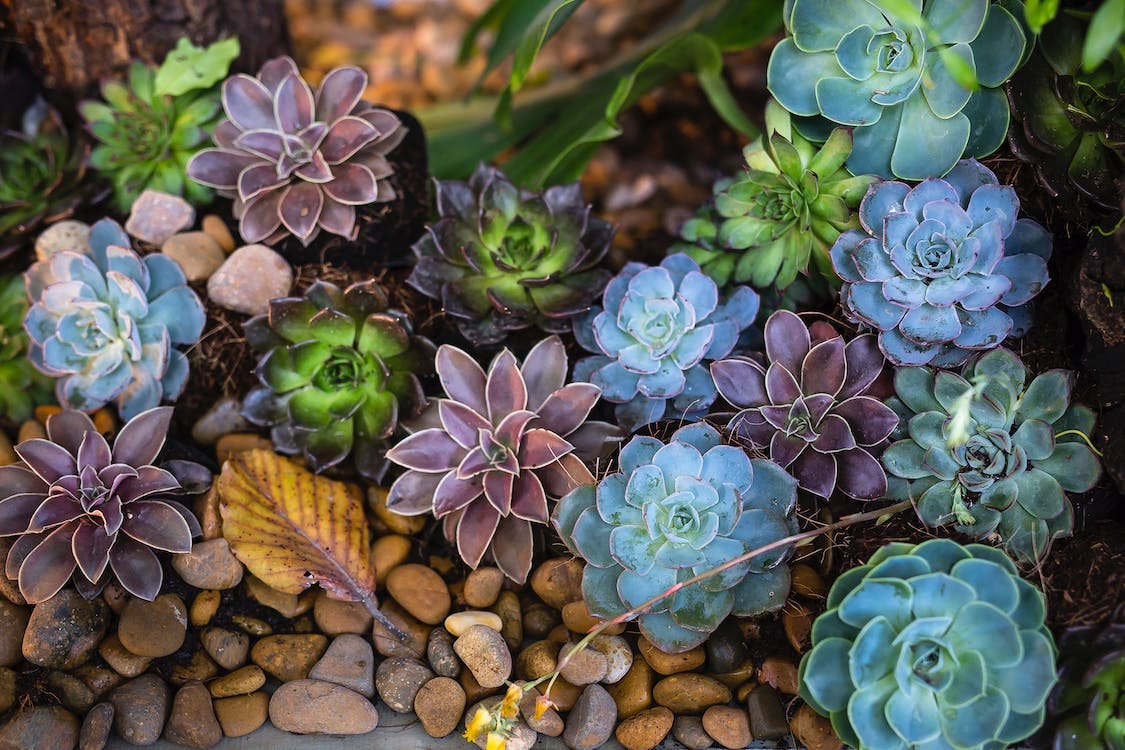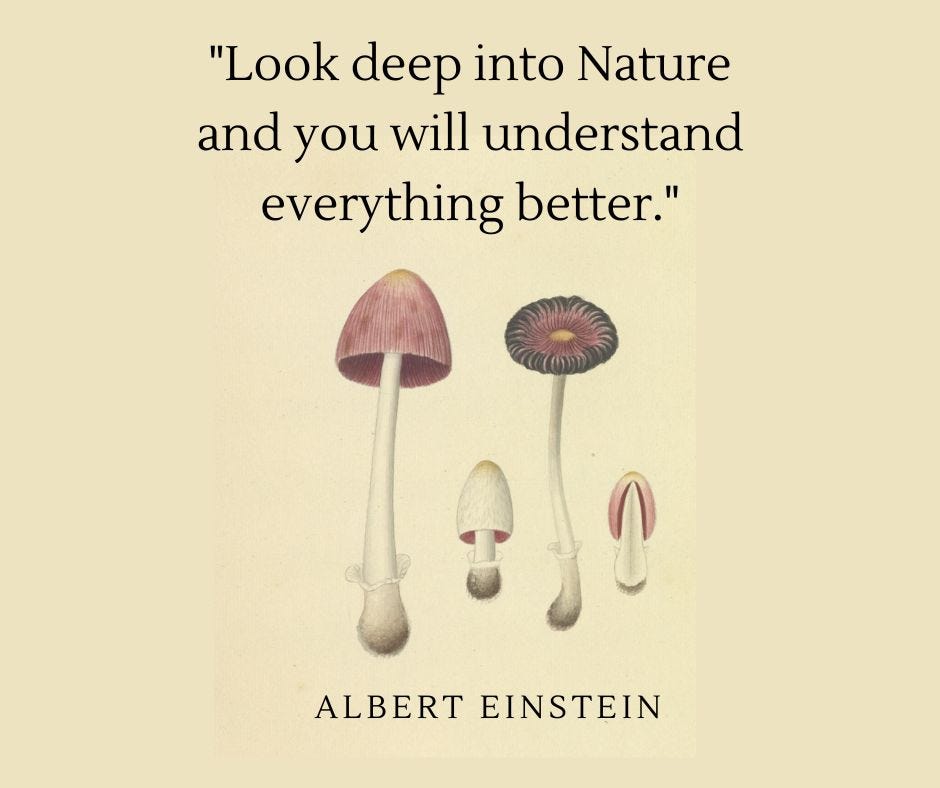- The Weird Circular
- Posts
- Writing Poetry About Nature in Your Backyard
Writing Poetry About Nature in Your Backyard
How to Explore and Write Poetry About the Green Spaces in Your Life

When I decided to create a nature poetry workshop, one harsh reality I wanted to explore was the fact that nature access is inequitable. How could I ask participants to experience nature and write about that experience when so many people in the US live in areas where experiencing nature is, for many, an economic barrier?
Not all neighborhoods are created with equal access to nature. For example, you can put your address into the website NatureQuant to get a “Nature Score” for your area. Mine is 81.6, meaning it is a “Nature Utopia” with “Abundant health-beneficial natural elements and nature exposure opportunities.” I live on the outskirts of Houston, near the bayou and several nature trails. Furthermore, my neighborhood “meets the World Health Organization's urban green space accessibility standards.” That means that my area has “at least 0.5-1 hectare of public green space within 300 meters.” (Nature) However, some areas of Houston, like downtown, are only “adequate,” meaning that it takes more effort for people to enjoy nature.
At the heart of the inspiration for my nature poetry workshop is old-school field guides. These were books created by ordinary people or naturalists that helped track and catalog the plants and wildlife of a small area. At the heart of the nature field guide is the idea that anyone can observe nature and that nature doesn’t have to just be big, exciting destination places.
The solution I came up with was to ask poets to explore the green places in their cities and neighborhoods, writing poetry about their community. This has two benefits: 1) the poet learns about access in their area and experiences new areas they may not have otherwise explored, and 2) The poet shares that knowledge with the reader.

A Nature Poet's Field Guide
DATE: 4 Weeks Starting September 9
TIME: Asynchronous, Self-Paced via The Poetry Barn
PRICE: from $275
Sit under the moon. Climb a tree. Take a hike. Observe. Nature is everywhere. In this workshop, we’ll make our own field guides to the natural world around us by using observational journaling to craft new poems. If you love learning about nature while writing poetry, this workshop is for you. Go out into the world and write poems by learning to observe and appreciate the natural world. From ecopoetry to seasonal poetry, this workshop will inspire poetry “from emotion recollected in tranquility,” as William Wordsworth said.
Urban Nature Poetry
Often, when we think of nature poetry, our minds drift to idyllic pastoral landscapes or the rugged wilderness untouched by human hands. However, nature isn't confined to remote forests or picturesque valleys. It thrives in the cracks of sidewalks, on the rooftops of city buildings, and along the bustling streets of our neighborhoods.
One of my favorite nature poems is “Mint” by Seamus Heaney. It focuses on the humble herb juxtaposed with human intervention in nature:
Mint
by Seamus Heaney
It looked like a clump of small dusty nettles
Growing wild at the gable of the house
Beyond where we dumped our refuse and old bottles:
Unverdant ever, almost beneath notice.
But, to be fair, it also spelled promise
And newness in the back yard of our life
As if something callow yet tenacious
Sauntered in green alleys and grew rife.
The snip of scissor blades, the light of Sunday
Mornings when the mint was cut and loved:
My last things will be first things slipping from me.
Yet let all things go free that have survived.
Let the smells of mint go heady and defenceless
Like inmates liberated in that yard.
Like the disregarded ones we turned against
Because we’d failed them by our disregard.
I love this poem because I love the idea of the “backyard of our life”. Writing nature poetry inspired by urban environments is not only a way to reconnect with the natural world but also an opportunity to see our cities from a new, greener perspective.
Here's how to draw inspiration from your neighborhood and city to craft nature poetry that can inspire others to look at their surroundings with fresh eyes.
Start by Observing
The poet, at heart, is an observer. It’s rare that we slow down and think about our world. We often move through it like a person disconnected. But the reality is everyone is a part of their local community and their larger global world. As such, we have to be good stewards. This means accurately describing the world around us: the good and the bad. This may mean observing the positive (accessible green spaces) and the negative (how neighborhoods could be more walkable or nature-forward).
To begin writing about nature in your backyard, start with observation. Take a simple walk in your neighborhood, local park, nature trails, local national parks, or nature preserves. If walking’s not your vibe, you can bike, kayak, or even sit on a picnic blanket. Notice the plants, both planted and wild. Take note of the sunlight, shadows, water, air, and wildlife. Start by jotting down simple descriptions of what you see and feel. These notes will serve as the raw material for your poetry.
Learn the Language of Your Environment
To write accurately about nature, it’s helpful to know the names and characteristics of the plants, trees, and animals you encounter. Spend some time researching the natural history of your city. This might include identifying the species of trees that line your streets, understanding the types of flowers that grow in local parks, or learning about the birds that you hear singing each morning.
Take pictures of informational signs and brochures at parks. Pay attention to how nature is described, including any jargon or scientific facts. This knowledge will not only deepen your appreciation of your urban environment but will also enrich your poetry with accurate and specific details that can captivate your readers.
Capture the Contrast
One of the unique aspects of urban nature poetry is the juxtaposition of the natural and the man-made. Explore the contrasts and connections between these worlds. How does the shadow of a building change the landscape of a small garden? How do the city sounds blend with or disrupt the natural soundscape? Does your city have any “green” architecture? Use these observations to add depth to your poetry, playing with the duality of urban nature.
Consider how humans interact with nature in your city. This could range from community gardening efforts to the impact of pollution on local ecosystems. Reflect on your own relationship with nature in your urban setting. How does this relationship shape your sense of identity, community, or connectivity? By weaving these reflections into your poetry, you offer readers a chance to ponder their own connection with the natural world.
Reimagine the Natural World
One amazing thing about this class is that each time I teach it, someone comes up with a speculative poem (with scifi, fantasy, or horror themes). It reaffirms for me the power of nature: We often see it as magical. Being in nature and writing about it can feel magical, like we are peeking into a hidden world.
Here is a poem from the last time I taught this workshop. What I love about this poem is how it marries speculative tropes like the witch from fairy tales with descriptions of a real-life place known to the poet. The poet, Raven Magill, agreed to let me share this fantastic example:
Good Guests Always Bring a Gift
by Raven Magill
There’s a witch in the glen.
Her cauldron offers the bubble
and froth of white-cold waters
polishing the hollowed and
hallowed limestone bright.
In her home of eldritch green,
mist-soaked, consecrated
with primordial mud, she floods me
with a Pleistocene lullaby, all
heart-thrumming hush.
There are the glinting shattered shale,
dragon scales shed from her
watchful
familiar—
There
are the boulders,
like altars-
And here
am I,
with berry-stained palms,
making of myself
an offering.
Don’t be afraid to explore other ways of viewing your world. Nature poetry collides with science poetry and speculative poetry in surprising ways.
Writing nature poetry inspired by urban environments reminds us that nature is everywhere, including the heart of our cities. By observing, learning, and reflecting, we can create poetry that not only celebrates the natural world but also encourages others to notice and protect it, no matter where they live. Don’t be afraid to write about the mundane in the backyard of your life. Each city has its unique ecosystem, and by writing poetry, you invite others to see the beauty and vitality of nature in places they might have overlooked.
And who knows, maybe your poems will make up a collection about your city!
Upcoming Workshops from Holly Lyn Walrath
If you enjoyed this newsletter, consider upgrading to leave me a tip and help me keep the proverbial lights on at the house of poets.
And now for a word from our sponsor…
The quickest way to scale as a writer? Ghostwriting.
✅ You don’t need any startup capital.
✅ You don’t need a big social audience.
✅ And you don’t need decades of writing experience.






Reply